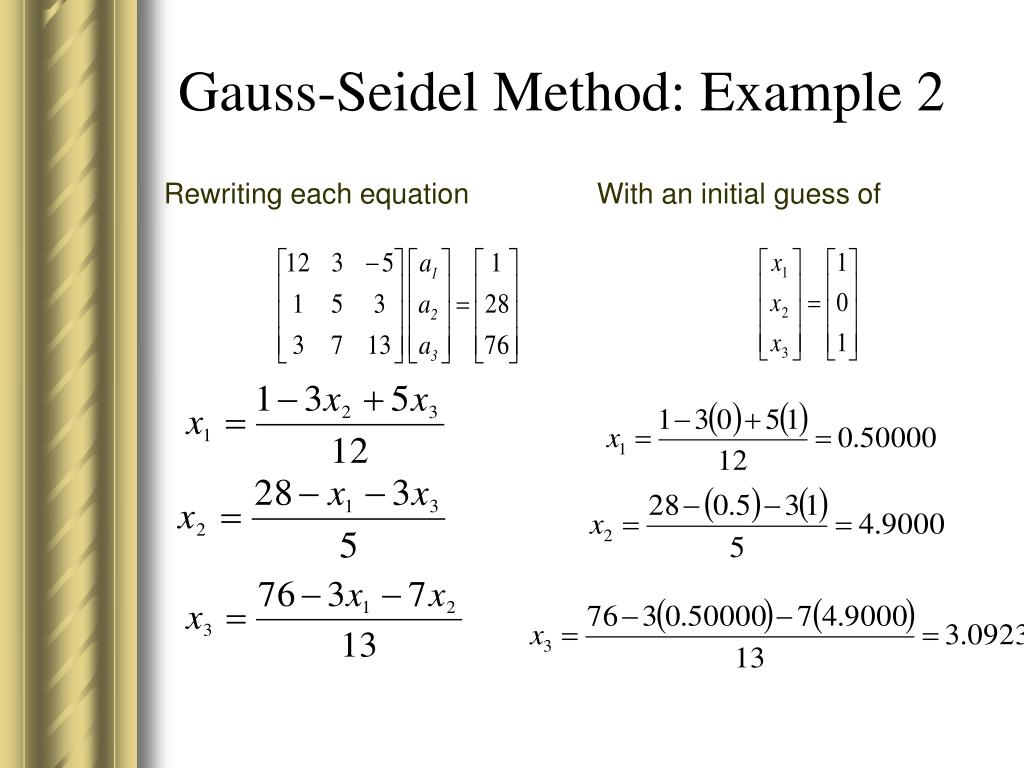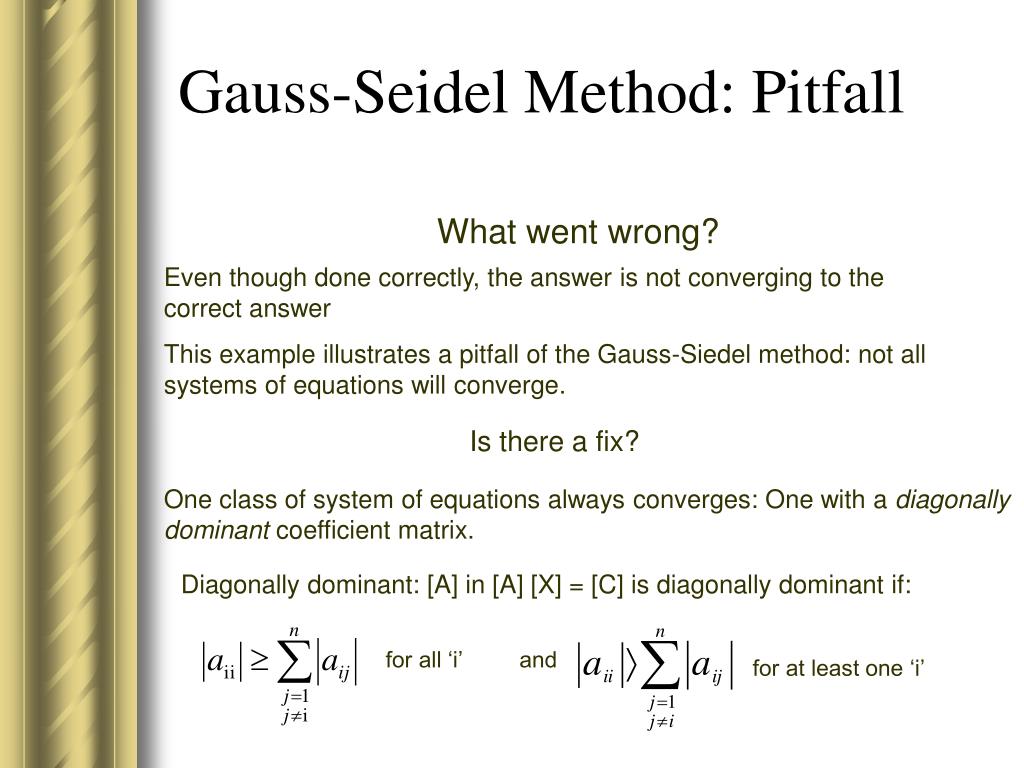Gauss Seidal Method Presentation
| Introduction to Gauss Seidal Method | ||
|---|---|---|
| The Gauss Seidal method is an iterative numerical method used to solve systems of linear equations. It is an improvement over the Gauss-Jordan elimination method as it converges faster for certain types of systems. The method is particularly useful for solving large systems of equations or when an initial approximation is known. | ||
| 1 | ||
| Algorithm of Gauss Seidal Method | ||
|---|---|---|
| Start with an initial approximation of the solution vector. For each equation, update the corresponding variable using the newly computed values of the other variables. Repeat the process until the desired level of accuracy is achieved or a maximum number of iterations is reached. | ||
| 2 | ||
| Advantages of Gauss Seidal Method | ||
|---|---|---|
| Convergence: The Gauss Seidal method has better convergence properties compared to other iterative methods. Efficiency: It converges faster for systems that are diagonally dominant or have a dominant diagonal. Memory Usage: The method requires less memory as it only stores the current solution vector. | ||
| 3 | ||
| Limitations of Gauss Seidal Method | ||
|---|---|---|
| Non-Diagonally Dominant Systems: The method may fail to converge if the system is not diagonally dominant or lacks a dominant diagonal. Slow Convergence: For systems that do not meet the convergence criteria, the method may require a large number of iterations to reach the desired solution. Dependency on Initial Approximation: The accuracy and speed of convergence depend on the quality of the initial approximation. | ||
| 4 | ||
| Applications of Gauss Seidal Method | ||
|---|---|---|
| Power Flow Analysis: The method is widely used in power system analysis to solve complex systems of power flow equations. Finite Element Analysis: It is used in structural and fluid mechanics simulations to solve large systems of equations. Image Processing: The method can be applied to image denoising, image deblurring, and image reconstruction algorithms. By following the Gauss Seidal method, you can efficiently solve systems of linear equations and apply it to various fields of engineering, mathematics, and computer science. |  | |
| 5 | ||


